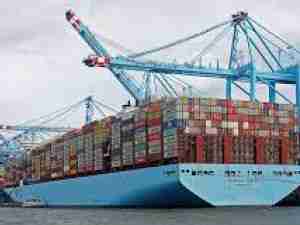Key insights:
- Measures to contain recent outbreaks in the Ningbo region are limiting trucker access to the port and closing some warehouses. Closures could limit manufacturing in the region and in other areas, but broader travel restrictions could mean factories that normally close over Lunar New Year will stay open, reducing the typical pre-holiday pressure on logistics.
- Omicron infections among port workers at LA/Long Beach are expected to slow operations there in the coming weeks, even as the ports continue to struggle with congestion and backlogs.
- Air cargo rates out of Asia have fallen about 30% from their mid-December peak season highs. But COVID impacts on crew availability, passenger travel, and tightening quarantine rules in Asia are already reducing available capacity, and will help keep rates elevated or climbing
Asia-US rates:
- Asia-US West Coast prices (FBX01 Daily) decreased 14% to $12,524/FEU. This rate is 218% higher than the same time last year.
- Asia-US East Coast prices (FBX03 Daily) dipped 1% to $16,495/FEU, and are 232% higher than rates for this week last year.
Analysis
Though everyone hoped that the new year would bring steady improvement in both the pandemic and its impacts on logistics, so far it’s more of the same.
China’s “Zero COVID” policy is starting to impact operations at the major port of Ningbo. Area closures and restrictions to contain the spread in the region are limiting truck access to the port, with reports of some warehouse closures as well. The recent increase in cases could limit manufacturing in the region and in other areas with outbreaks. But broader travel restrictions could also mean factories that normally close over the Lunar New Year (LNY) holiday will stay open, reducing the typical pre-holiday pressure on logistics.
Ningbo’s counterparts across the ocean, the ports of LA/Long Beach, continue to struggle with congestion, and are facing a virus-driven challenge of their own. As omicron surges in southern California, more and more of the ports’ labor force has tested positive – including two thirds of those tested on Tuesday – and authorities are bracing for a slowdown in operations.
Rates are expected to climb as LNY rapidly approaches. Any additional slow down due to COVID will likely exacerbate the congestion and backlog, and continue to keep pressure on container rates as well.
Air cargo rates out of Asia have come down from their peak-season highs. The Freightos Air Index shows China-Europe prices have fallen 30% from their mid-December peak to $5.68/kg, with Freightos marketplace data showing a similar decline for Asia-US West Coast rates. But COVID impacts on crew availability, passenger travel, and tightening quarantine rules in Asia are already reducing available capacity, and will help keep rates elevated or climbing.









